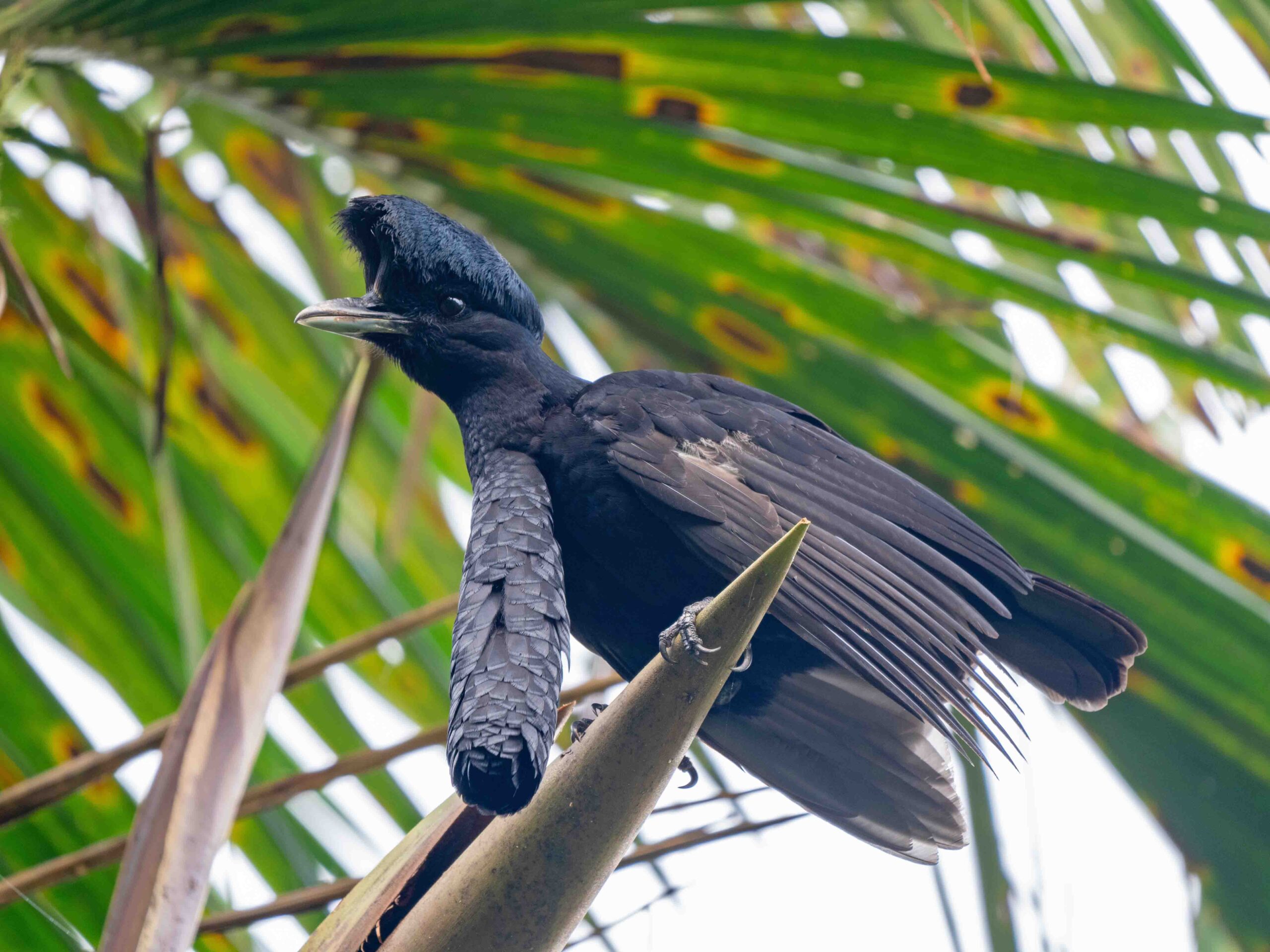
Long-wattled Umbrellabird by John Bruce
Tour Dates: Saturday 1st – Friday 14th November 2025 (Quito to Quito)
Tour Price: £4,699pp plus flights
Estimated Flight Price: London to Quito approx. £900 return
Deposit: £600 per person
Conservation Donation from Wise Birding: £150 – £200
Minimum Number: 6 people
Maximum Group Size: 8 people
Target Birds:
Long-wattled Umbrellabird, Andean Condor, Toucan Barbet, Red-headed Barbet, Golden-headed Quetzal, Grey-breasted Mountain Toucan, Andean Cock-of-the-Rock (both red and orange forms), Green Jay, Andean Motmot, Subtropical Cacique, Torrent Duck, White-capped Dipper, Rufous-bellied Seedsnipe, Sword-billed Hummingbird, Mountain Velvetbreast and Sapphire-vented Puffleg, Gould’s Jewelfront, Ecuadorian Piedtail, Napo Sabrewing, Green Hermit, White-tipped Sicklebill, Giant Antpitta, Yellow-breasted Antpitta, Ochre-breasted Antpitta, Chestnut-crowned Antpitta, Moustached Antpitta, Plain-backed Antpitta, Ochre-breasted Antpitta, White-bellied Antpitta, Grey-tailed Piha, Blue-rumped Manakin, Coppery-chested Jacamar, Military Macaw and many, many more!!
Target Mammals:
Spectacled Bear, Mountain Tapir and Spix’s Night Monkey
Tour Summary
Ecuador is a hugely impressive country for bird diversity and this tour gives a fabulous opportunity to see a large number of amazing birds (including around 50 hummingbird species) and all whilst staying at comfortable lodges where many of the bird spectacles begin as soon as you step out of your room! Photography opportunities on this tour are excellent and there is also a very good chance of seeing two iconic mammals on this tour, Spectacle Bear and Mountain Tapir.
We spend the first night in Quito and then begin the tour with a very relaxing 5 night stay at the excellent Sachatamia Lodge and we use this as a base to explore different sites and altitudes as we look for many exciting birds including iconic species like the Long-wattled Umbrellabird, Andean Cock-of-the-Rock and Sword-billed Hummingbird as well as numerous Choco specialities and many Antpittas! Then after a week exploring the western slopes of the Andes we head to the east where we will be birding amongst the backdrop of the Antisana and Cotopaxi Volcanoes as Condors fly overhead as well as the higher altitude areas where Mountain Tanagers and Seedsnipes await us. Here in the mountains, we have a very good chance for Spectacled Bear and Mountain Tapir. The final part of the tour is based at the fantastic Wildsumaco Lodge well known for its solid conservation project and many specialities like Coppery-chested Jacamar, Yellow-throated Spadebill, Gray-tailed Piha, Military Macaw and many more. – So come and join us!
ACCOMMODATION: 13 nights in Ecuador
1 night Quito, 4 nights Sachatamia Lodge, 2 nights edge of Quito, 1 night Guango Lodge, 2 nights San Isidro Lodge, 2 nights Wildsumaco Lodge, 1 night Quito City.
Meals: Full board starting with dinner on day 1 through until breakfast on day 14
Day 1: Arrival Quito
After arriving in Quito we will transfer to a nearby hotel to rest before the start of the tour.
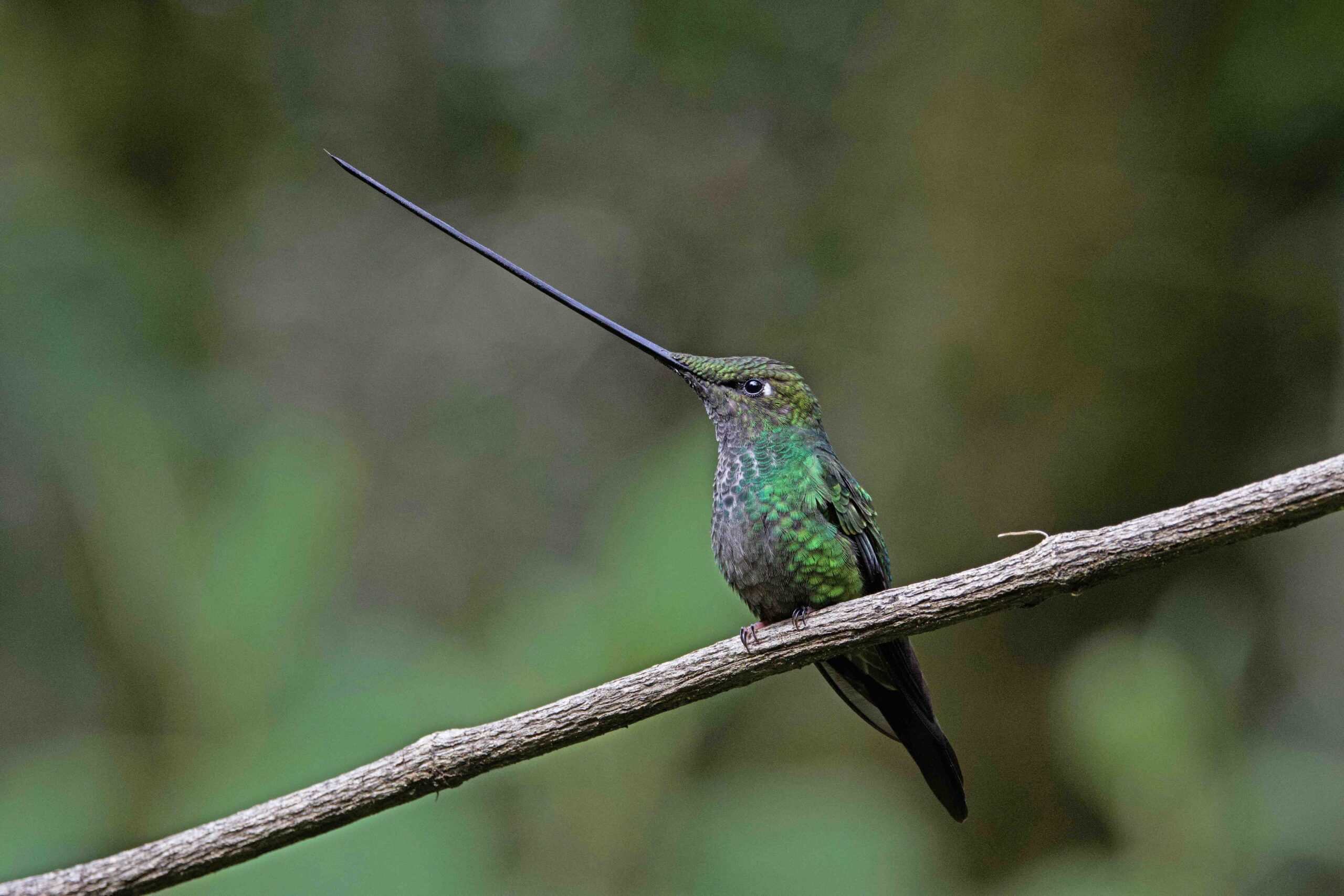
Sword-billed Hummingbird by Andres Trujillo
Day 2: Departure to Zuro Loma feeders and Sachatamia lodge
This morning we get the tour off to a great start by heading into the Andes where we will visit some feeders that are always highly impressive with some great species to start the tour like Sword-billed Hummingbird, Mountain Velvetbreast and Sapphire-vented Puffleg. We also have a chance of finding the endemic Black-breasted Puffleg, but it has become a very tricky species to find in recent years. Once we have had our fill of the hummingbirds, we can then visit the reserve Antpitta feeding area! Chestnut-naped Antpitta, Chestnut-crowned Antpitta and Rufous Antpitta are all possible here. After a welcome lunch to warm us up, we will then take the road down to a lower altitude where we will do some birding in the cloud forest at around 2,000 metres, making stops in several places for target species. Special birds we will be looking for include Rufous-gaped Hillstar, Slaty-backed Chat Tyrant and White-capped Dipper. We will then continue our route on the “Ruta del Quinde” (the hummingbird route) until we reach our accommodation. Overnight Sachatamia Lodge
Day 3: Sachatamia Lodge – Tandayapa Valley
This morning we will spend time birding around Sachatamia. This marvelous lodge has the privilege of being located next to the protected forest reserve of Mindo-Nambillo. The area is well known for its incredible biodiversity and it has taken first place in the annual global birding day count of bird species. We will visit some of the blinds and feeders of the surrounding gardens and we will try hard to find special species such as Barred Forest Falcon and maybe a female Long-wattled Umbrellabird. More common, but nonetheless impressive, species like Masked Trogon, Rufous Motmot, Strong-billed Woodcreeper, Montane Woodcreeper, Grey-breasted Wood Wren and Ornate Flycatcher await us too! During the afternoon we will visit the infamous Tandayapa Valley where we will spend the afternoon birding the dirt road where we will be looking for gems like Tanager Finch and Golden-headed Quetzal. Overnight Sachatamia Lodge
Day: 3 Silanche and Milpe
Today we visit two fantastic bird sanctuary areas, Silanche and Milpe. We will start the day at Silanche where we will visit the 5th floor canopy tower for some up close and personal views of many exciting species and it should be a real Tanager Fest! Silver-and-Gold Tanager, Blue-browed Tanager, Scarlet-browed Tanager, Blue-whiskered Tanager. In addition to species such as Scarlet-breasted Dacnis, Dusky Pigeon, Slate-throated Gnatcatcher, Blue-chested Hummingbird, Choco Trogon, Broad-billed Motmot, Choco Toucan, Black cheeked Woodpecker, Red-rumped Woodpecker and many more. After lunch at our lodge we will visit nearby Milpe Bird Sanctuary. If we have not seen it already, we will enter the forest here to try for Club-winged Manakin before then spending time at the feeders. Here, we should find some wonderful new species that may include Crowned Woodnymph, Green Thorntail, Red-headed Barbet, Yellow-throated Toucan, Pale-mandibiled Aracari and more! Overnight Sachatamia Lodge
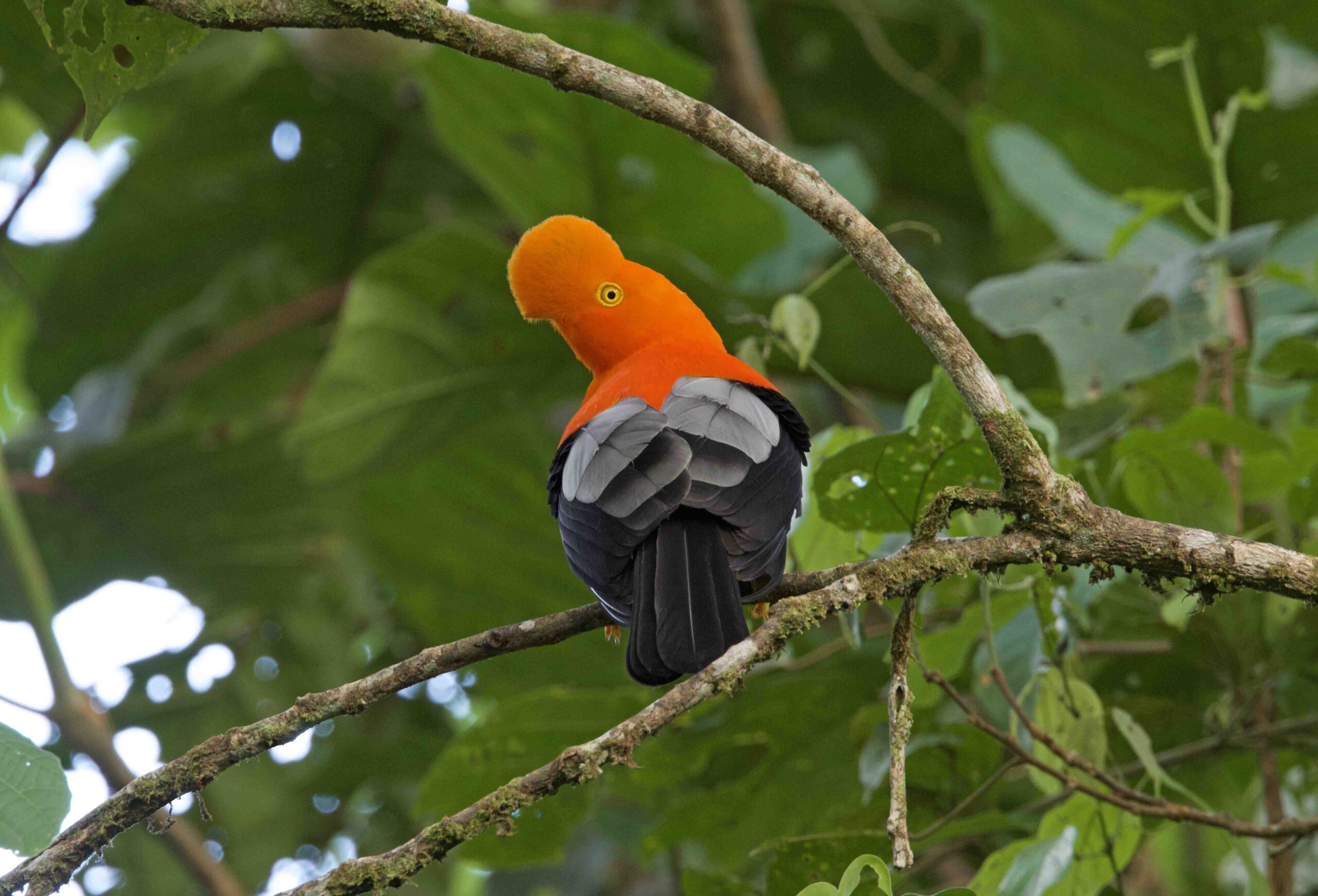
Andean Cock-of-the-Rock (East slope) by Andres Trujillo
Day 4: Long wattled Umbrella bird
Today we will depart very early in order to visit a very special reserve that does a great job in protecting the amazing and highly prized, Long-wattled Umbrellabird. We may possibly have already seen a female (without a wattle) at our accommodation but the purpose of this day is to try and see the fabulous male. The amazing male bird has an incredibly long pendulous chest wattle and it can even control the length of the wattle, shortening it and retracting it completely in flight. It is a rare resident of humid foothill and lowland forests of the Pacific slope of the Andes from Colombia to southwestern Ecuador. The birds form small leks where males display with an amazing fog-horn-like call! We will spend the whole day exploring this bird rich area where there are many chances to see different forest species, including a number of the Choco forest specialities. Overnight Sachatamia Lodge
Day 5: Mashpi Amagusa
Another early start as today we head towards the Mashpi area, deep in the Choco forest where we will visit the feeders at the Amagusa Reserve. It is a privately owned reserve of around 130 hectares of recovering forest in the new protected important bird area (IBA) Mashpi-Pachijal. The location of this forest within this IBA makes it even more special since this area is the last foothill-forest that directly connects to the lower subtropical western forest of Ecuador. The Basantes family have been farming this area for 20 years and it is now managed for conservation. Sergio and his wife Doris have been working to change their farming habits to include conservation ideas to improve and protect the habitat. As always in Ecuador, there are some great feeders with many opportunities to see different species for the trip and some wonderful photo opportunities. We hope to find many exciting species like Golden Tanager, Glistening Green Tanager, Flame-faced Tanager, Rufous-throated Tanager, Golden-collared Honeycreeper, Toucan Barbet, Red-headed Barbet, Moss-backed Tanager, Crimson-rumped Toucanet, Rose-faced Parrot and many more. We will then take a walk on the road to try for other birds that may include Back Solitaire, Orange-breasted Fruiteater, Lyre-tailed Nightjar, Olive Finch, Indigo Flowerpiercer, Green-fronted Lancebill, Tawny-throated Leaftosser and with luck the very rare Choco Vireo, one of just three sites to see this bird in the world! Overnight Sachatamia Lodge
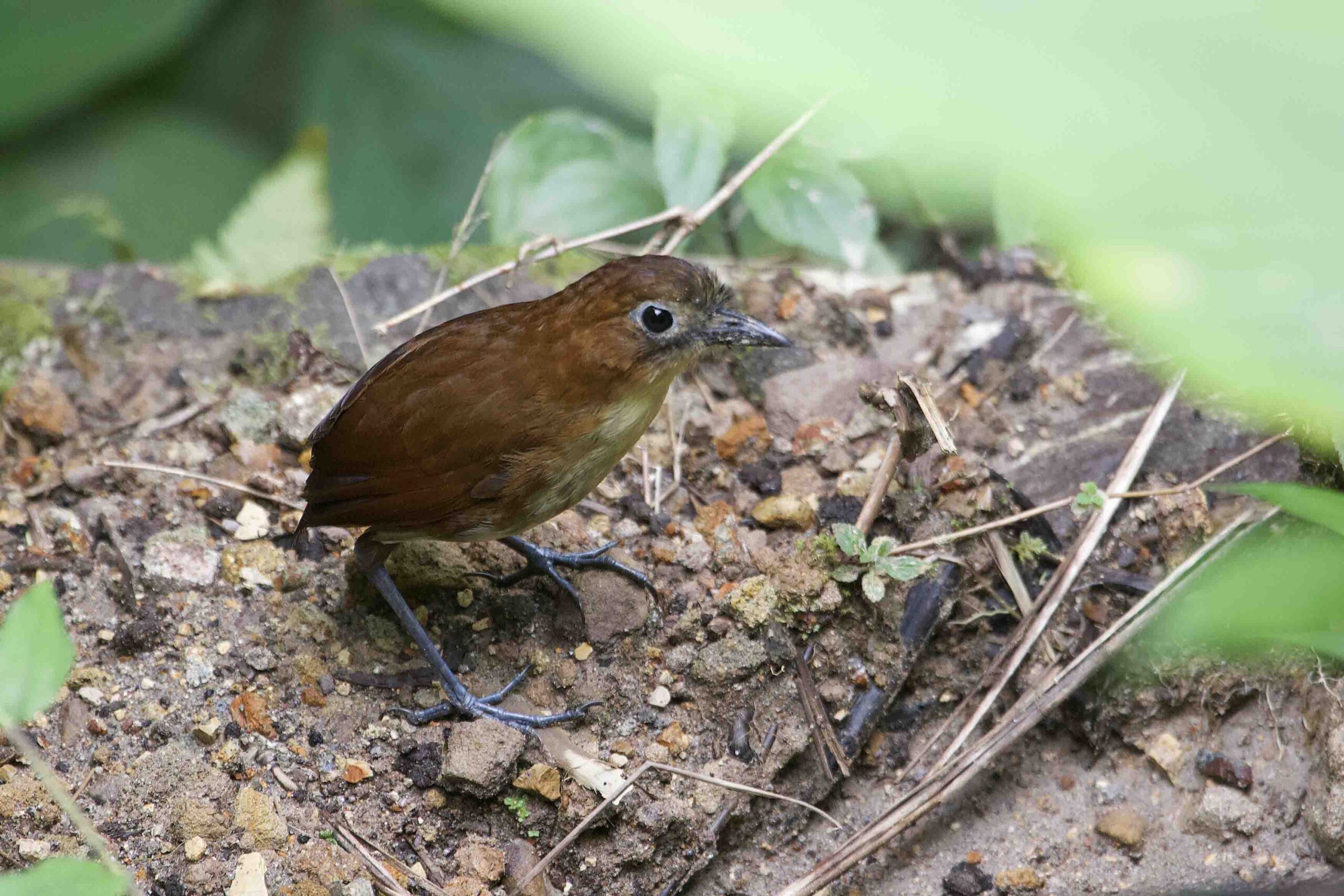
Yellow-breasted Antpitta by Andres Trujillo
Day 6: Angel Paz de las Aves
Today we head to this world renowned reserve to see many Antpittas! The two brothers Angel and Rodrigo Paz, were the first people in the world to successfully feed Antpittas that allowed birders to see them. Many of the species were always notoriously difficult to see, but a visit to this amazing reserve turns that on its head! The species we will be looking for here include Giant Antpitta, Yellow-breasted Antpitta, Ochre-breasted Antpitta, Chestnut-crowned Antpitta and the Moustached Antpitta. All the species rarely come every single day, so we still need a bit of luck, but it is common to see at least two or three different species and sometimes the whole set! The reserve is also a good place to see the red form of Andean Cock-of-the Rock and there is also a chance to see Dark-backed Woodquail and sometimes Rufous-breasted Ant-thrush too. After a full morning in the reserve we will then slowly make our way back to Quito before the start of our time exploring the Eastern slope of the Andes. Overnight outskirts of Quito
Day 7: Antisana National Park
The ecological reserve of Antisana was created in July 1993 and is located on the east side of the Andes ridge facing the Amazon basin. We will spend a whole day in this beautiful area where on clear days the views Antisana and Cotopaxi volcanoes in the snow are unforgettable. We start by visiting La Mica Lake where we will be looking for Silvery Grebe, Andean Gull, Andean Ibis, Andean coot, Andean Teal, Tawny Antpitta, Tufted Tit-Tyrant, Grass Wren, Paramo Pipit, Many-striped Canastero, Paramo Ground Tyrant, Cinereous Harrier, Ecuadorian Hillstar, Giant hummingbird and of course the mighty Andean Condor! We will enjoy lunch at a beautiful location called Tambo Condor with an amazing view across the landscape where we will enjoy the incredible volcanoes and even a chance to see Andean Fox and maybe even Spectacled Bear! Overnight outskirts of Quito
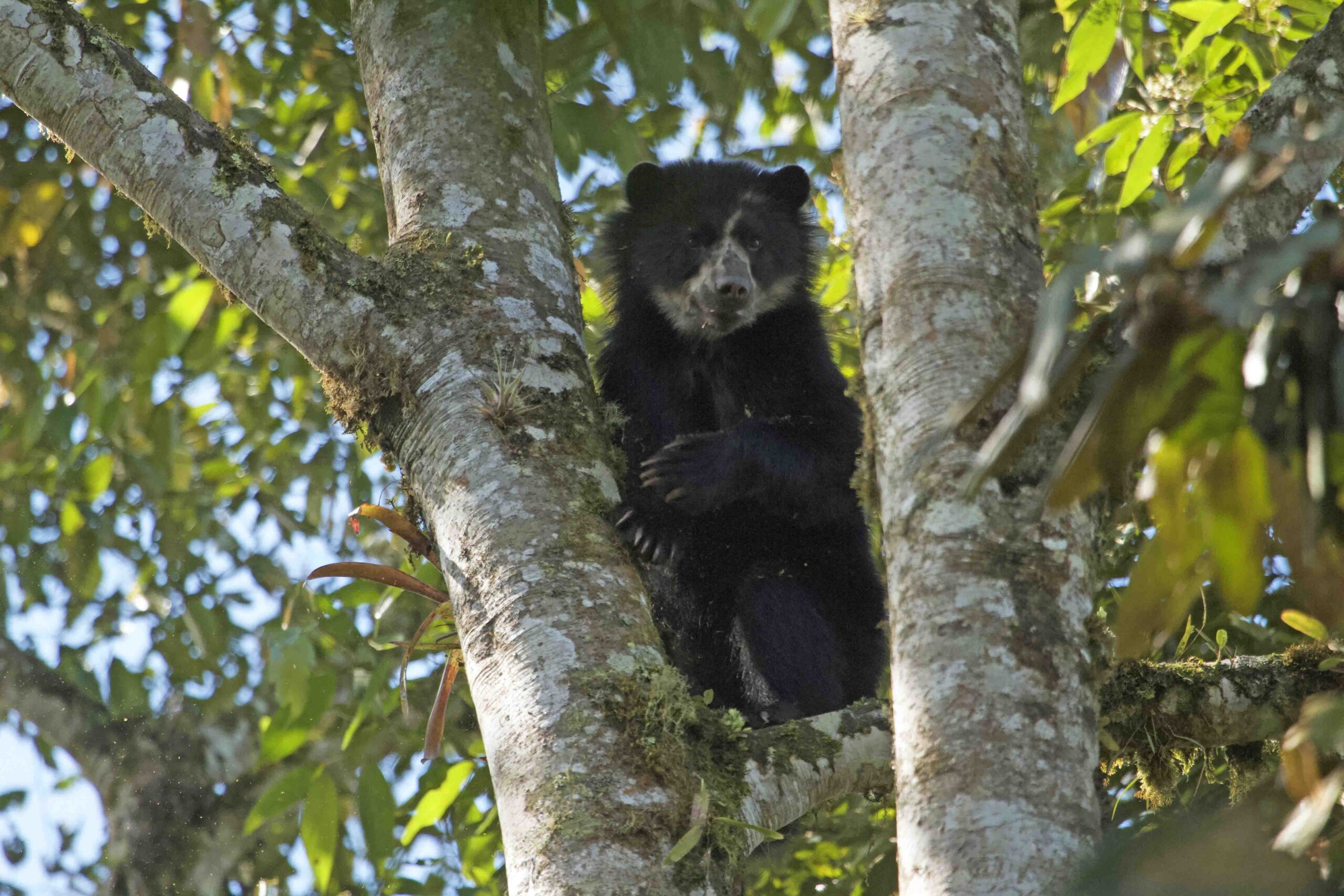
Spectacled Bear by Andres Trujillo
Day 8: Papallacta and Oyacachi
Today we will make a special effort to try and see two iconic mammals, the Spectacled Bear and Mountain Tapir. In recent years these two mammals have been seen frequently in these mountains and there are a number of key hotspot areas that we will check, but we still need some good luck with the weather as the low cloud often restricts visibility. Of course, whilst we are at altitude there we will be spending much of our time targeting many of the high temperate and stunt forest speciality birds! Top bird targets will hope to try for include the Rufous-bellied Seedsnipe and the skulking White-chinned Thistletail at the highest altitude areas, but once again, this much depends on the weather. Overnight outskirts Guano Lodge
Day 9: Papallacta/Guango
This morning we will wake up at Guango lodge. It is a small rustic lodge and has a great selection of humid temperate forest birds, often with nice mixed flocks some rarities too. We will be looking for Andean Guan, Grey-breasted Mountain Toucan, Turquoise Jay, Scarlet-bellied Tanager, Lacrimose Tanager, Buff-breasted and Hooded Mountain-Tanagers, Gray-hooded Bush-Tanager, Black-capped and Black-eared Hemispingus and Slaty Brush-Finch. As always, there will be plenty of hummers to distract us with new species such as Speckled Hummingbird, Gorgeted Woodstar, White-bellied Woodstar, Tourmaline Sunangel and possibly the rare Mountain Avocetbill. A wander down to the river should reveal White-capped Dipper and this is one of the best places in Ecuador to see the beautiful Torrent Duck. After a very enjoyable full morning, we will have lunch at the lodge and then transfer to the San Isidro Mountains. Overnight San Isidro lodge
Day 10: San Isidro all day
We spend the whole day birding the area close to our very comfortable accommodation in the subtropical forest. The beauty of this lodge is that so many great birds can literally be seen the second you step out of your room! Just some of the species we hope to see here include Green Jay, Andean Motmot, Subtropical Cacique and good chances to see White-bellied Antpitta coming into worms and there have even been some recent records of Peruvian Antpitta. Other birds to look for here are Golden-collared Honeycreeper, Red-hooded and White-capped Tanagers, Sparkling Violetear, Speckled Hummingbird, Fawn-breasted Brilliant, Bronzy and Collared Incas, Buff-tailed (the rare eastern flavescens race) and Chestnut-breasted Coronets, Tyrian Metaltail, Long-tailed Sylph and Gorgeted Woodstar. The lodge is probably best known in terms of birds for its “mystery” owl that can often be found near the cabins and we will make a special effort to try and find it. The species of owl remains unconfirmed an it may be a previously undescribed race of Black-banded Owl, or it could even be a new species. Another of the lodge’s attractions is for its mammals. We will try for the nocturnal Spix’s Night Monkey and there is another chance to see Mountain Tapir here too. Overnight San Isidro lodge
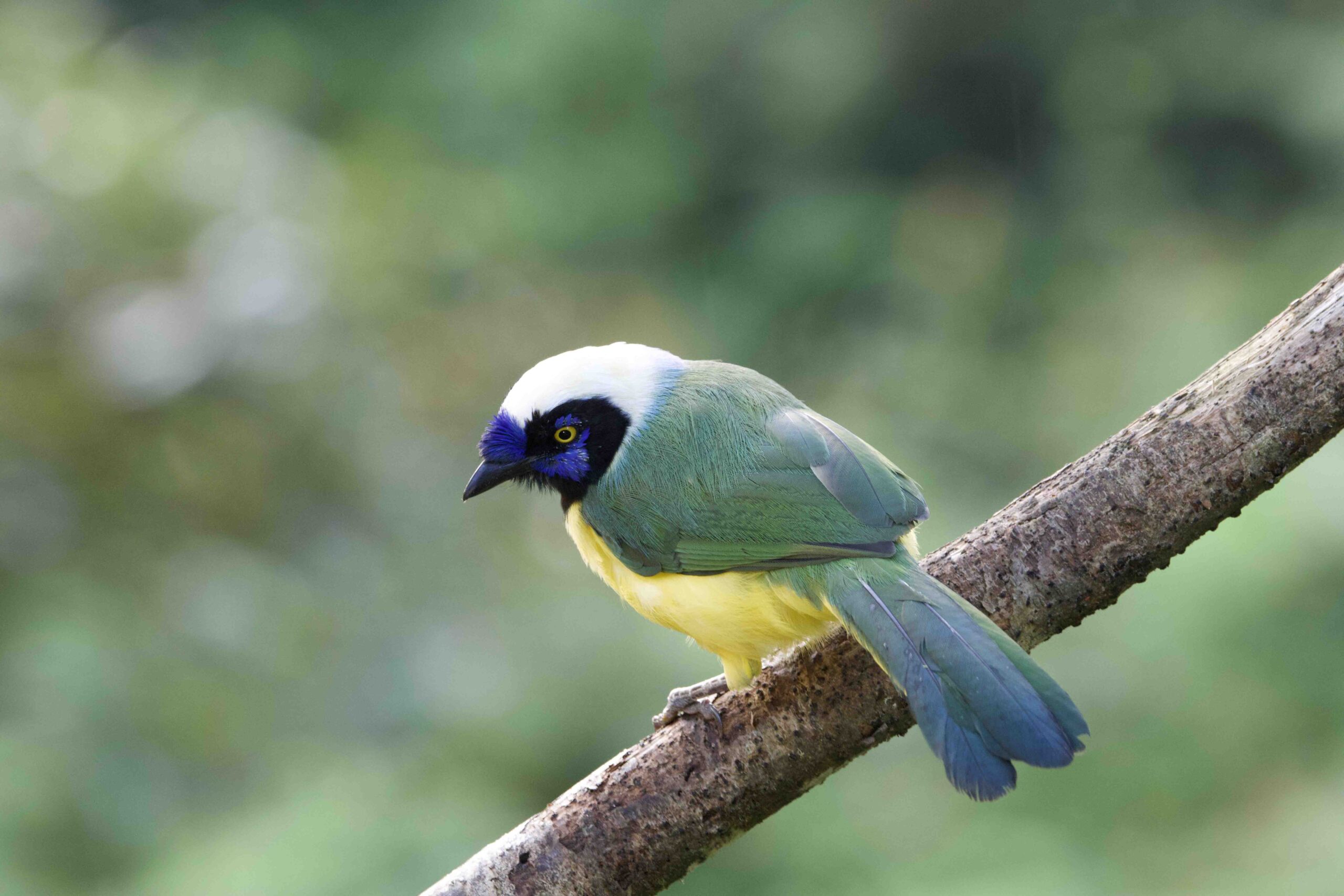
Green Jay by Andres Trujillo
Day 11: San Isidro to Wildsumaco
After a final morning birding around San Isidro we head towards Wildsumaco lodge. This beautifully situated lodge and the associated private reserve was created by conservationists and birders with the sole aim to preserve and protect the rainforest for its birdlife. As a result, the forest at Wildsumaco has numerous exciting specialties that can be difficult to find elsewhere. Much of our day will be spent birding the trails and dirt roads. The species that we can see today are endless and it should certainly be an exciting day with many new trip species. We hope to find specialities like the Grey-tailed Piha, Blue-rumped Manakin, Coppery-chested Jacamar and Military Macaw. As well as Buff-breasted Tody, Musician Wren, Striolated Puffbird, Many-banded Aracari, Fulvous Shrike Tanager, Scarlet-breasted Fruiteater, Golden-collared Toucanet, Blue-necked Tanager, Spotted Tanager, Yellow-bellied Tanager, Green-and-Gold Tanager, Spot-fronted Swift, and more. There is an excellent Antpitta feeding area just a short walk from our accommodation where we hope to see Plain-backed Antpitta and Ochre-breasted Antpitta. Hummingbird feeders within the grounds are also impressive with unique foothill Amazon species like Gould’s Jewelfront, Ecuadorian Piedtail, Napo Sabrewing and Green Hermit. Overnight Wildsumaco Lodge
Day 12: Amarun Pakcha
We will visit a local Kichwa town where a group of friends and family have created a foundation called Amarun Pakcha. This foundation has purchased around 278 hectares of forest protecting rivers, waterfalls and their way of life. Here, we have access to a very nice Andean Cock-of-the Rock lek (eastern orange form) where the birds gather to dance. The rest of the day will be spent targeting any species that we missed yesterday. Overnight Wildsumaco Lodge
Day 13: Wildsumaco – Quito
We will spend our final early morning birding the Wildsumaco lodge, either from the relaxed viewing deck, birding the trails or a return visit to the Antpitta feeding area. Then after lunch we will take the 4 hour drive back to Quito but stopping en route to have lunch at Baeza to enjoy some local food before arriving at our Quito hotel. Overnight Quito
Day 14: Airport Transfer
We will take the short transfer to Quito airport for return flights home.
Please note this is a flexible itinerary which may need to be adjusted slightly dependent on arrival / departure times, weather conditions and the most recent information from our local guides
Leaders: Wise Birding leader and local guide throughout
Included in cost: Accommodation in twin en-suite rooms, all meals starting with breakfast on day 2 to dinner on day 15, ground transport, park and reserve fees and services of leader.
Not included in cost: International flight, travel insurance, drinks other than water and any airport/visa fees.
Single Supplement: TBC
Transport: Minibus
Difficulty: A good level of fitness is required, particularly as trails cover a range of altitudes and steep trails in places.
Climate: Highly variable. A wide range of temperatures can be expected dependent on altitude, getting close to freezing early morning in the mountainous areas.
Tour Start Point: Quito International airport, Ecuador
Tour End Point: Quito International airport, Ecuador
Suggested Airlines: KLM via Amsterdam or British Airways via Madrid